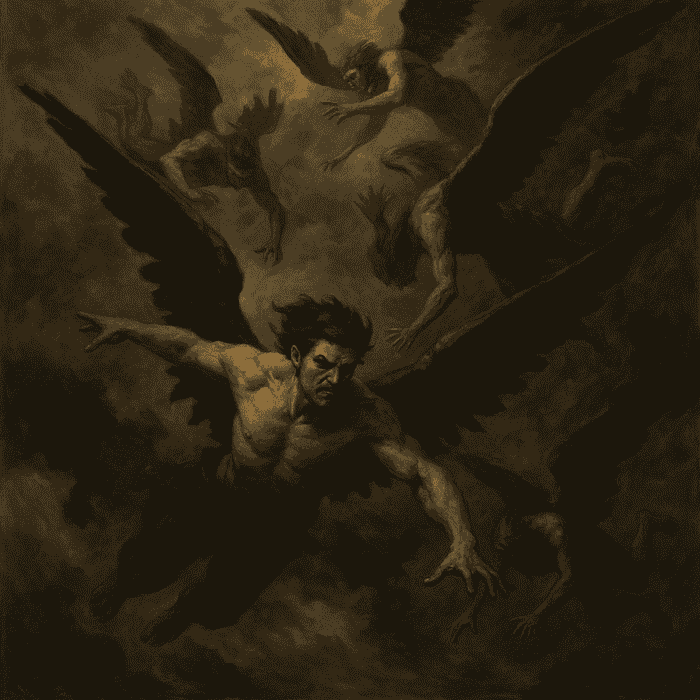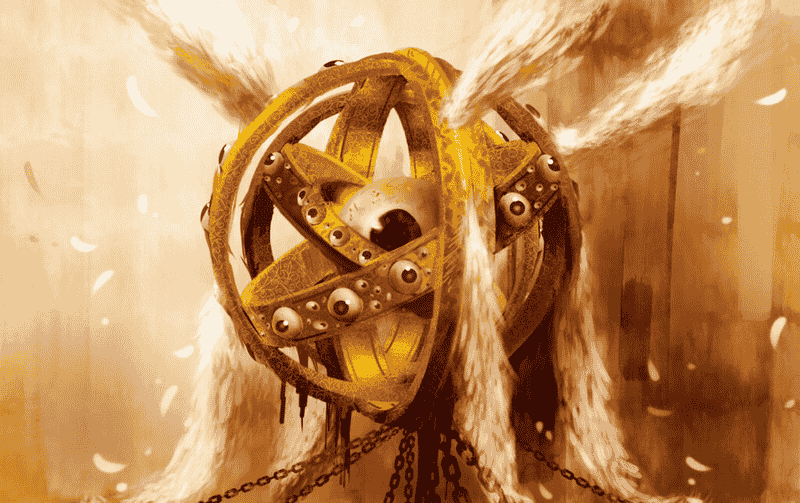How do Angels Look Like?
Typically, when people think of angels, they picture a baby-like figure decorated with harps and halos, or a lovely, heavenly woman with wings:
Most people have no idea that the angels in the Bible probably don't look anything like what we've seen in movies or in our imaginations.
Angels do not have cherub cheeks or seem like infants, for example, and not all pictures of angels are true, especially those from the Renaissance.
In fact, the shape they adopt dictates the response to this question. Because they are spiritual entities, angels can assume many shapes and sizes. According to Hebrews 13:2, angels can pose as humans on occasion, leading us to unwittingly serve them.
But then there are other sections that are completely out of left field. One example is the prophet's attempt to describe angels in Ezekiel 1 through a succession of images, one of which is wheels adorned with eyeballs.
To put it plainly, no one has ever drawn a perfect picture of an angel, although the Bible does provide some hints as to how they might sometimes appear.
Realistic Angel Descriptions in the Bible
While some descriptions of angels from Scripture are closer to what we imagine them to look like, there are some truly terrifying descriptions of angels in the Bible, too.
Biblically Accurate Angels in the Old Testament:
1. Ezekiel 1:5-14 (Cherubim described) "And in the fire was what looked like four living creatures. In appearance their form was that of a man, but each of them had four faces and four wings. Their legs were straight; their feet were like those of a calf and gleamed like burnished bronze. Under their wings on their four sides they had the hands of a man. All four had faces and wings, and their wings touched one another. They did not turn as they moved, each went straight ahead."
2. Isaiah 6:2-3 (Seraphim described) "Above him were seraphim, each with six wings: With two wings they covered their faces, with two they covered their feet, and with two they were flying. And they were calling to one another: 'Holy, holy, holy is the Lord Almighty; the whole earth is full of his glory.'"
3. Daniel 10:5-6 (Appearance of the angel in Daniel’s vision) "I looked up and there before me was a man dressed in linen, with a belt of fine gold from Uphaz around his waist. His body was like topaz, his face like lightning, his eyes like flaming torches, his arms and legs like the gleam of burnished bronze, and his voice like the sound of a multitude.
Biblically Accurate Angels in the New Testament:
4. Matthew 28:3 (Angel at the resurrection) "His appearance was like lightning, and his clothes were white as snow."
5. Revelation 4:6-8 (Living creatures around God’s throne) "Also in front of the throne there was what looked like a sea of glass, clear as crystal. In the center, around the throne, were four living creatures, and they were covered with eyes, in front and behind. The first living creature was like a lion, the second was like an ox, the third had a face like a man, the fourth was like a flying eagle."
Get Closer to God Today
4.9
Average Rating
|Over 5 Million Downloads
Why Do Angels Look Scary?
Rather than a greeting or a celebration, the first thing angels say when they descend upon people is something like, "Do not be afraid."
This implies that rather than the feeling of serenity and comfort that we associate with angels, there's a strong likelihood that their appearance will make people feel afraid.
This is not to argue that there aren't any angels in heaven who resemble people. However, since they don't alter our understanding of an angel’s true form, we'll concentrate on the biblically true angels that would be frightening.
Why are angels designed to be fearsome rather than lovely beings if, as Genesis tells us, "God saw everything that he had made, and indeed, it was very good" which implies that God makes beautiful things?
According to one hypothesis, angels would be scary to us since we couldn't understand their eldritch shapes. They are powerful creations that support and serve God. Angels can therefore radiate their strong presence when they appear to us.
Angels are spiritual beings that transcend space and time, according to another conception. Therefore, it can be quite challenging to recreate their appearance using pieces of identifiable patterns that our minds can comprehend, replete with their heavenly light and presence as well as supernatural strength and might. It can cause us to visualize angels in a rather unpleasant way.
For this reason, we contrast their looks with those of creatures that we are familiar with and can quickly identify on Earth.
Types of Angels in the Bible
There are 4 types of angels in the Bible.
Cherubim
The cherubim are depicted in Genesis as guardians of sacred sites and hidden wisdom. They guard the path to the Tree of Life with a burning sword, and they stand to the east of Eden's garden. The plural form of the Hebrew word for winged beings, cherubim, is used in the book of Exodus.
Thus, cherubim are frequently portrayed as "baby" angels in religious artwork, so goes the prevalent idea. Because cherubim are said to have a man's face in Ezekiel 10:14, the concept is controversial even among rabbinical groups.
Most academics agree that the cherubim's job is to protect holy objects in heaven and on earth. Both the early Tabernacle and Solomon's Temple had numerous cherubim as decorative elements.
Visual representations of cherubim typically have several wings and faces, each of which stands for a distinct facet of creation. The cherubim that appeared to Ezekiel in his vision had four faces and four wings, each one symbolizing a different animal: a human, a lion, an ox, and an eagle. Their pervasiveness and interconnectedness with all forms of life are demonstrated by this.
Seraphim
Source
The Seraph, also spelled Seraphim, is another angelic being mentioned in Isaiah 6. "Seraphs stood over him; each one had six wings," Isaiah describes the appearance of these angels in verse two. One set of wings could shield their faces while the other set covered their feet, allowing them to soar through the air.
According to Isaiah's vision, the seraphim's primary purpose is to constantly worship and give thanks to God. They exclaim "Holy, holy, holy is the Lord of hosts; the whole earth is full of his glory."
The ceremonial washing of Isaiah's sins is symbolized by one of the seraphim touching a hot coal from the altar to his lips, as part of the ritual purifying him for his prophetic vocation.
This act exemplifies the seraphim's function as a go-between, connecting the perfect God with our imperfect selves.
Archangels

Among the angels mentioned in the Bible, the archangels stand out for the significant roles they play. They are often entrusted with important messages from God to deliver to humanity and with other divine obligations as well.
The word "archangel" appears twice in the Bible, once in Jude and again in 1 Thessalonians 4:16.
Other Angels Mentioned
The concept of guardian angels is mentioned in two places in the Bible: Psalm 91:11 and Matthew 18:10.
Furthermore, as mentioned in the Bible, certain angels have sinned and fallen from their heavenly position. Revelation 5:11–12 tells us that most angels remained holy and obedient to God, while a handful were tainted by their rebellion.
After attempting to usurp God's throne for himself, this angel—whose name was Lucifer before the fall and Satan thereafter, descended from heaven (Isaiah 14:12–14).
The angels who originally appeared to Sarah and Hagar to tell her about Isaac first appear in Genesis 16. In Genesis 18:22, one of the men is referred to as "the LORD" when the trio pays a return visit to Abraham. One prevalent understanding of theophany is that it describes the appearance of God to humans just before Jesus Christ became flesh and lived among us.
Genesis 19:1 describes the judgment of Sodom being carried out by the two surviving "men," who are really angels. Genesis 16 and 19 both call these "men" angels, but those verses don't go into any greater description about them, including what they look like.
Names of Angels in the Bible
Michael is the only angel explicitly named an archangel in Scripture, appearing in Jude 9, Daniel 10, and Revelation 12:7, where he leads an army of angels against Satan. Gabriel is another named angel who delivered messages to Zechariah, Mary, and Joseph about the births of John the Baptist and Jesus.
He also appears in Daniel 8 and 9. While some apocryphal texts label Gabriel as an archangel, his specific rank remains unknown, though his role as God’s messenger is clear.
The Bible doesn't mention other angels by name, but extra-biblical texts include Raphael (Tobit 12:15–22), associated with healing, and Uriel (2 Esdras 4:1–8), a source of wisdom. Jewish and Kabbalistic lore introduce names like Jophiel, linked with beauty and positivity, though no canonical or apocryphal texts confirm her role.
The Angel of Death, introduced in Exodus 11–12, lacks a biblical name but is referenced in Islamic texts as Azrael and Jewish folklore as Samael. Often personified as the Grim Reaper, this angel represents divine judgment.
Lastly, Lucifer is sometimes interpreted as a fallen angel based on Isaiah 14:12. However, scholars debate whether the passage refers to Satan or a Babylonian king. The name "Lucifer" originates from Latin translations, derived from the Hebrew term Helel ben Shachar, meaning "morning star, son of the dawn." This ambiguity has fueled ongoing theological discussions about its interpretation.
Get Closer to God Today
4.9
Average Rating
|Over 5 Million Downloads
What are Fallen Angels?

Fallen angels are angels who rebelled against God and were cast out of heaven as a result. The concept is rooted in various passages across the Bible, though the term "fallen angels" itself does not appear directly in most English translations. The idea is a synthesis of multiple texts from both the Old and New Testaments, along with interpretations from later Jewish and Christian tradition.
- Isaiah 14:12–15 (The Fall of “Lucifer”)
"How you are fallen from heaven, O Lucifer, son of the morning!... For you have said in your heart: 'I will ascend into heaven... I will be like the Most High.' Yet you shall be brought down to Sheol, to the lowest depths of the Pit."
Verse Interpretation: Although addressed to the king of Babylon, this passage is often interpreted by Christian tradition as referring to Satan’s fall. The name Lucifer (Latin for "light-bringer") is taken from the Latin Vulgate and has become associated with a proud angel cast out of heaven.
- Ezekiel 28:12–17
"You were an anointed guardian cherub... You were blameless in your ways... till unrighteousness was found in you... so I cast you as a profane thing from the mountain of God..."
Verse Interpretation: This is another prophetic oracle, addressed to the king of Tyre, but many interpret it allegorically as describing the pride and fall of Satan as a guardian cherub.
- Revelation 12:7–9 (The War in Heaven)
"Michael and his angels fought against the dragon, and the dragon and his angels fought back... The great dragon was hurled down—that ancient serpent called the devil, or Satan, who leads the whole world astray. He was hurled to the earth, and his angels with him."
Verse Interpretation: This passage explicitly describes a cosmic battle in heaven where Satan (the dragon) and his angels are defeated and cast down to earth.
- Genesis 6:1–4 (The “Sons of God” and the Nephilim)
"...the sons of God saw that the daughters of humans were beautiful, and they married any of them they chose... The Nephilim were on the earth in those days..."
Verse Interpretation: Many interpreters (especially in ancient Jewish and some Christian traditions) understand the “sons of God” to be angels who interbred with human women, producing the Nephilim—a race of giants. This narrative is linked to the Book of Enoch, an ancient Jewish text that elaborates on this rebellion and labels these angels as Watchers who fell.
Community Insights
Since some Bible-accurate angels are quite terrifying, people tend to exaggerate their appearance even further for the shock effect. Here is what someone had to say under a Reddit post of an AI-generated “biblically accurate angel”:
“Most of the angels in the Bible appear in the form of ordinary men. Since they're sent as messengers from God, that makes a lot of sense - appearing as a person is a good start if you want to talk to a person.
In a few places, like Ezekiel's vision of heaven, angels in heaven are described in pretty trippy ways, with wheels and eyes and stuff. The thing is, all those descriptions have some symbolic significance, so it's probably not presented to us because God is like "look how weird angels in heaven are," but rather because he's trying to tell you something through the imagery. Which means we probably shouldn't assume that they always look like that.
This has turned into the "biblically accurate angels" meme, which (ironically) is very rarely biblically accurate, consisting mostly of whatever the craziest, most trippy combination of rings and eyes the artist (or AI in this case, I'm pretty sure) can come up with. Which, to be fair, is sometimes really entertaining. But not very instructive about the Bible.” – DarkLordOfDarkness
What about God? Biblically Accurate God
In the Bible, God is not described in terms of a fixed physical appearance, but rather through His nature, attributes, and occasional symbolic manifestations.
God is spirit (John 4:24), meaning He is not a physical being and does not possess a body as humans do. He is invisible, eternal, and unapproachable in His full glory (1 Timothy 6:16). Throughout Scripture, God reveals Himself in ways people can grasp - through visions, voice, fire, thunder, and light. But always as a representation, not a literal image of His being.
There are several instances in the Bible where God allows humans to witness His presence in symbolic or dramatic forms, known as theophanies. God appears to Moses in a burning bush (Exodus 3), descends on Mount Sinai in fire, smoke, and thunder (Exodus 19), and is described in majestic, radiant terms in visions given to Isaiah (Isaiah 6) and Ezekiel (Ezekiel 1).
God is most fully revealed in the New Testament through Jesus Christ, who is described as “the image of the invisible God” (Colossians 1:15) and the one through whom God makes Himself known (John 1:18).
The Bible also presents a hierarchical order among angelic beings, which reflects God’s sovereign organization of the spiritual realm. Though not exhaustively defined in Scripture, different ranks of angels are mentioned, including seraphim (Isaiah 6), who surround God's throne in worship, and cherubim (Ezekiel 1, Genesis 3:24), who guard sacred spaces. Archangels, such as Michael (Jude 1:9, Revelation 12:7), are depicted as powerful warrior-angels with authority over other angels. The New Testament also uses terms like thrones, dominions, principalities, and powers (Colossians 1:16, Ephesians 6:12), suggesting a structured order of angelic and possibly demonic beings under God’s rule. This celestial hierarchy reinforces the Bible's theme of divine order and majesty, even among heavenly creatures.
The Bible places far more emphasis on God’s character attributes than on His appearance. He is described as holy, just, merciful, all-powerful, all-knowing, ever-present, and unchanging. These qualities appear consistently across both the Old and New Testaments and shape how believers are called to relate to Him. Importantly, the Second Commandment (Exodus 20:4) forbids creating images of God, reinforcing that He is beyond human visualization and should not be reduced to any physical form.
Get Closer to God Today
4.9
Average Rating
|Over 5 Million Downloads
Conclusion

Source: Ophanim by artist Danilo Wolf from ArtStation (2021)
Understanding biblically accurate angels reveals the depth and complexity of God’s creation. Far beyond popular portrayals, these extraordinary beings serve as powerful messengers, protectors, and reflections of God’s majesty.
By exploring biblical descriptions of angels, we gain insight into their unique roles in divine history and their unwavering dedication to God’s will. Whether standing as guardians of the holy or proclaiming God’s glory, angels remind us of the vastness of the heavenly realm.
Let their awe-inspiring forms and actions inspire a deeper appreciation for the mysteries of Scripture and the ways God works through His creation.
References:
All references are taken from the Holy Bible, using both Old and New Testament scriptures, commonly found in translations such as the ESV, NIV, or KJV.






